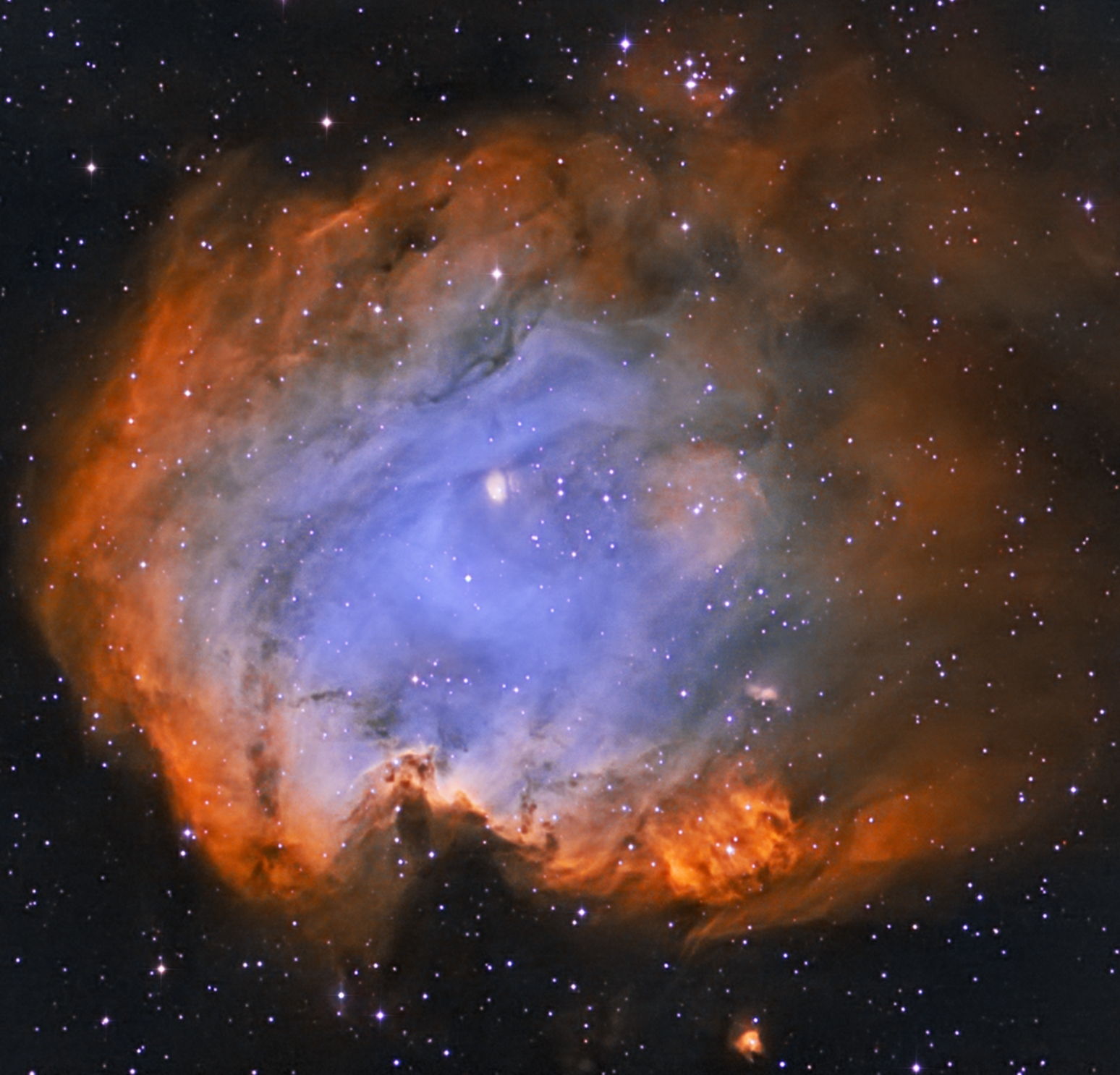The Wizard Nebula is an emission nebula that surrounds the open star cluster NGC 7380 in the constellation Cepheus. The nebula is known for its unique shape, resembling the appearance of a medieval sorcerer. The active star forming region lies at a distance of 7,200 light years from Earth and has an apparent magnitude of 7.2. It has a radius of 100 light years and occupies 25 arc minutes of the apparent sky. It has the designation Sh2-142 in the Sharpless catalog of H II regions.
Location: Via Lactea Observatory, Kristallopigi Paramithia, Greece
Instruments and exposure data:
W.O FLT110 with dedicated TMB field flattener
FeatherTouch 3'' focuser
Starizona MicroTouch autofocuser
W.O ZS80 ED
SBIG ST10XME CFW9
Meade DSIFilters: Ha 5nm Astrodon__O[III] 3nm Astrodon
Sky-Watcher EQ6 Pro
Ha_OIII_OIII modified palette: Ha_(OIII+0.4Ha)_OIII
Ha:71*10min bin1x1
O[III]:72*10min bin1x1
Total exposure time:23h 50min
Instruments and exposure data:
W.O FLT110 with dedicated TMB field flattener
FeatherTouch 3'' focuser
Starizona MicroTouch autofocuser
W.O ZS80 ED
SBIG ST10XME CFW9
Meade DSIFilters: Ha 5nm Astrodon__O[III] 3nm Astrodon
Sky-Watcher EQ6 Pro
Ha_OIII_OIII modified palette: Ha_(OIII+0.4Ha)_OIII
Ha:71*10min bin1x1
O[III]:72*10min bin1x1
Total exposure time:23h 50min
i totally reprocessed my previous published image of Wizard Nebula,hope you like it...























82_Little-Cocoon-Nebul.png)